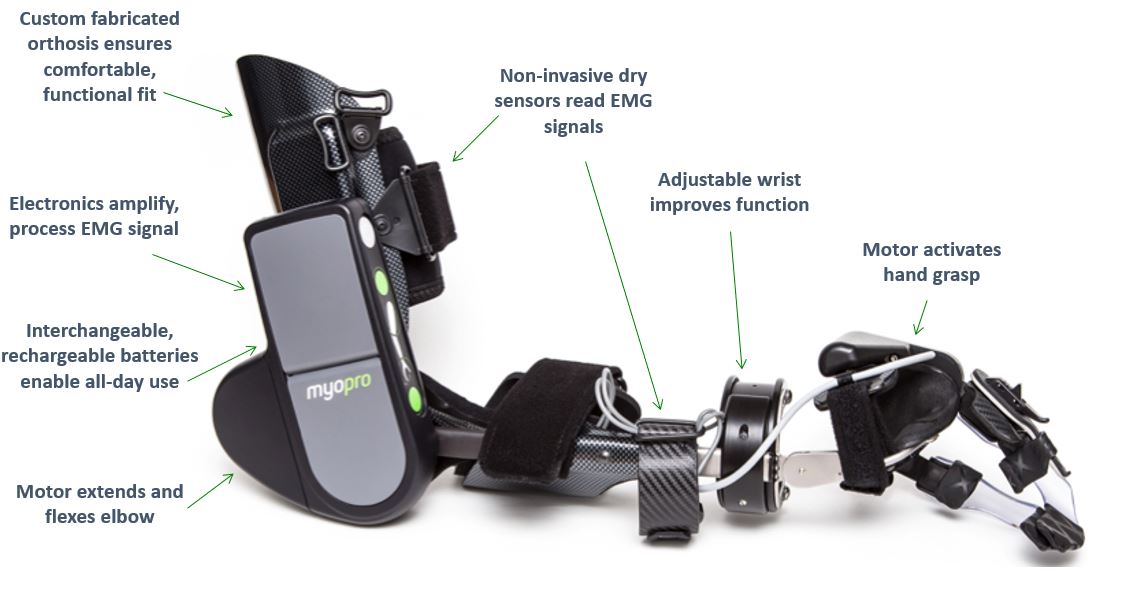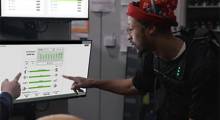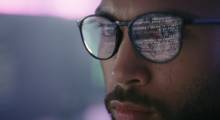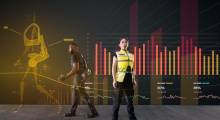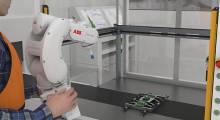One promising area of robotics research and development is for technology to assist patients with disabilities. Myomo Inc. has been working on wearable medical robotics that offer increased functionality to people suffering from neurological disorders and upper-limb paralysis. This week, the company announced that Thomas Jefferson University has completed the first phase of clinical trials using sensors embedded in the brain to control a MyoPro powered brace worn by a stroke patient.
“Someone has a stroke every 40 seconds in the US, resulting in death every 4 minutes,” said the Philadelphia university. “Stroke is the leading cause of disability from a medical condition.”
“This study serves as a proof of concept, a necessary bridge to future studies that would use fully implanted wireless electrodes to improve movement after stroke,” said Mijail Serruya, M.D., Ph.D., an assistant professor of neurology at Thomas Jefferson University and principal investigator of the study.
MyoPro helps 1,000 patients
Cambridge, Mass.-based Myomo's MyoPro is a powered upper-limb orthosis designed to support the arm and restore function to the weakened or paralyzed arms of patients suffering from cerebrovascular accident (CVA) stroke, brachial plexus injury, traumatic brain or spinal cord injury, ALS or other neuromuscular disease or injury.

MyoPro senses a patient’s own electromyography (EMG) signals through non-invasive sensors on the arm. The company said it can restore a person’s ability to perform activities of daily living, including feeding themselves, carrying objects and doing household tasks. Many are able to return to work, live independently and reduce their cost of care, it added.
“Over 1,000 patients, the majority being stroke survivors, have received a MyoPro to restore function in their paralyzed arms using its non-invasive sensors on the surface of the skin of their arms,” stated Jon Naft, vice president and general manager at Myomo. “What the Jefferson research foretells is a day when MyoPro might be controlled without requiring those sensors, just by the patient 'thinking' to move his arm or hand.”
“This could make it possible to serve patients with insufficient signals in their affected limbs and to wear MyoPro over regular fashion garments, helping to move users one step closer to full independence,” he said.
Article topics
Email Sign Up

